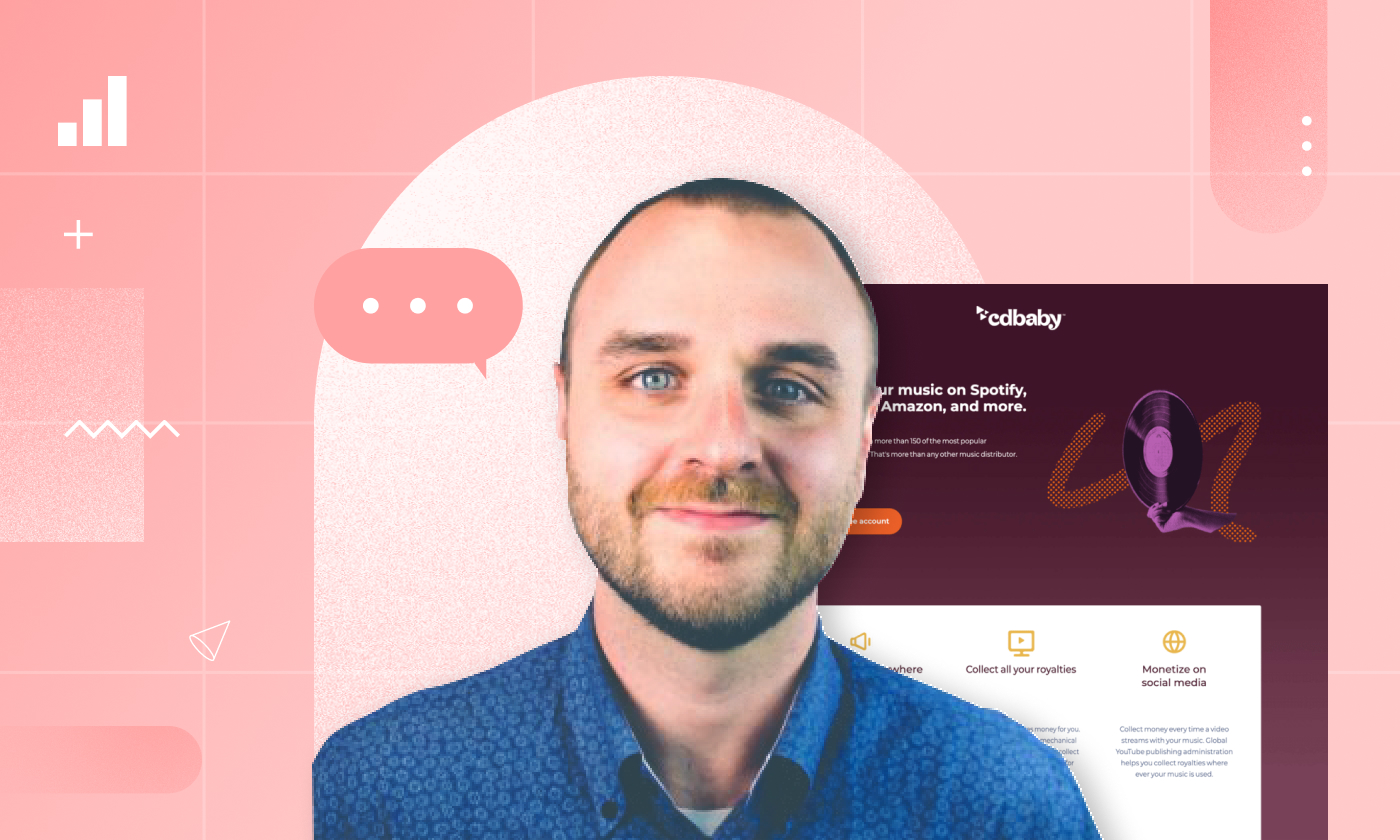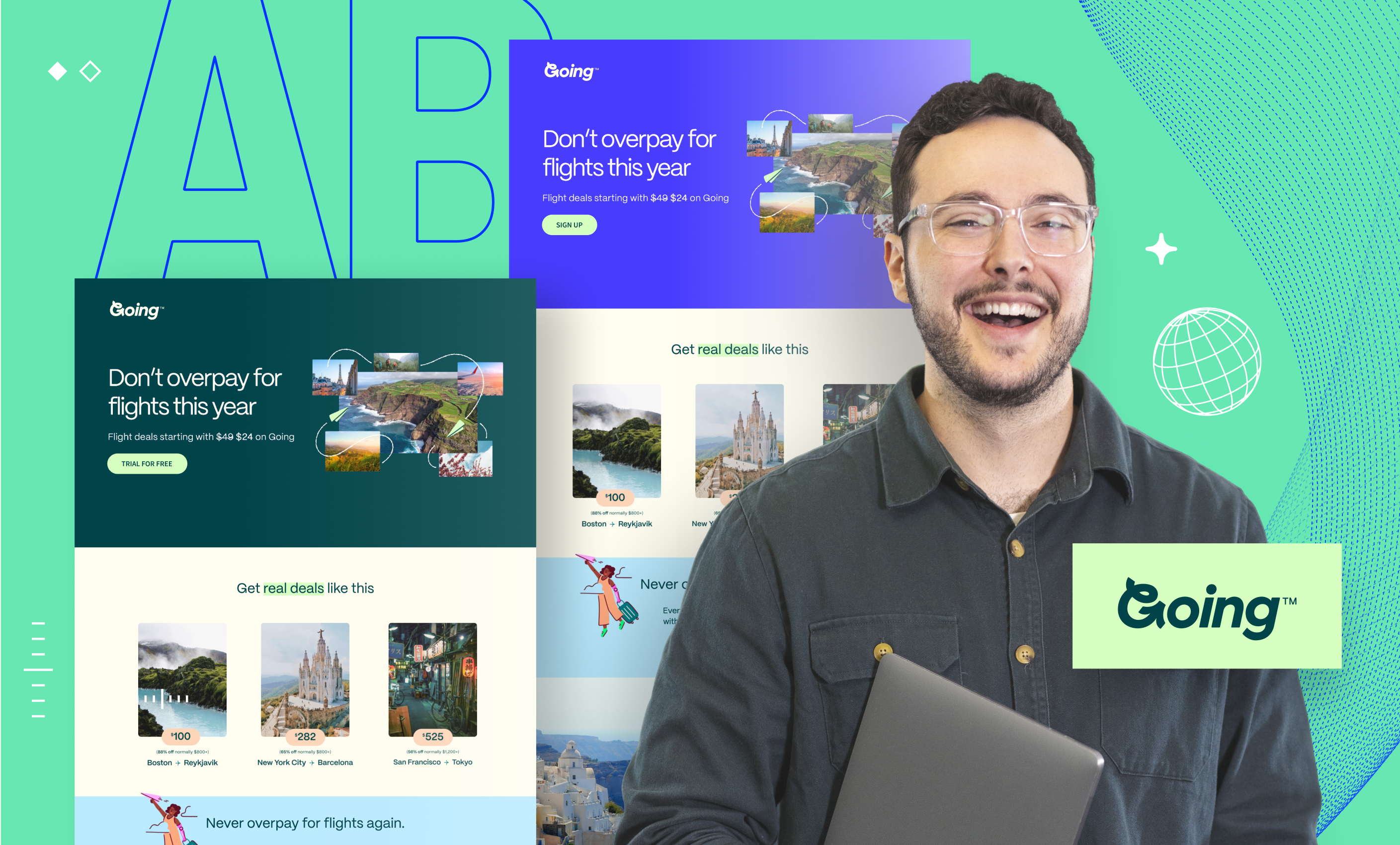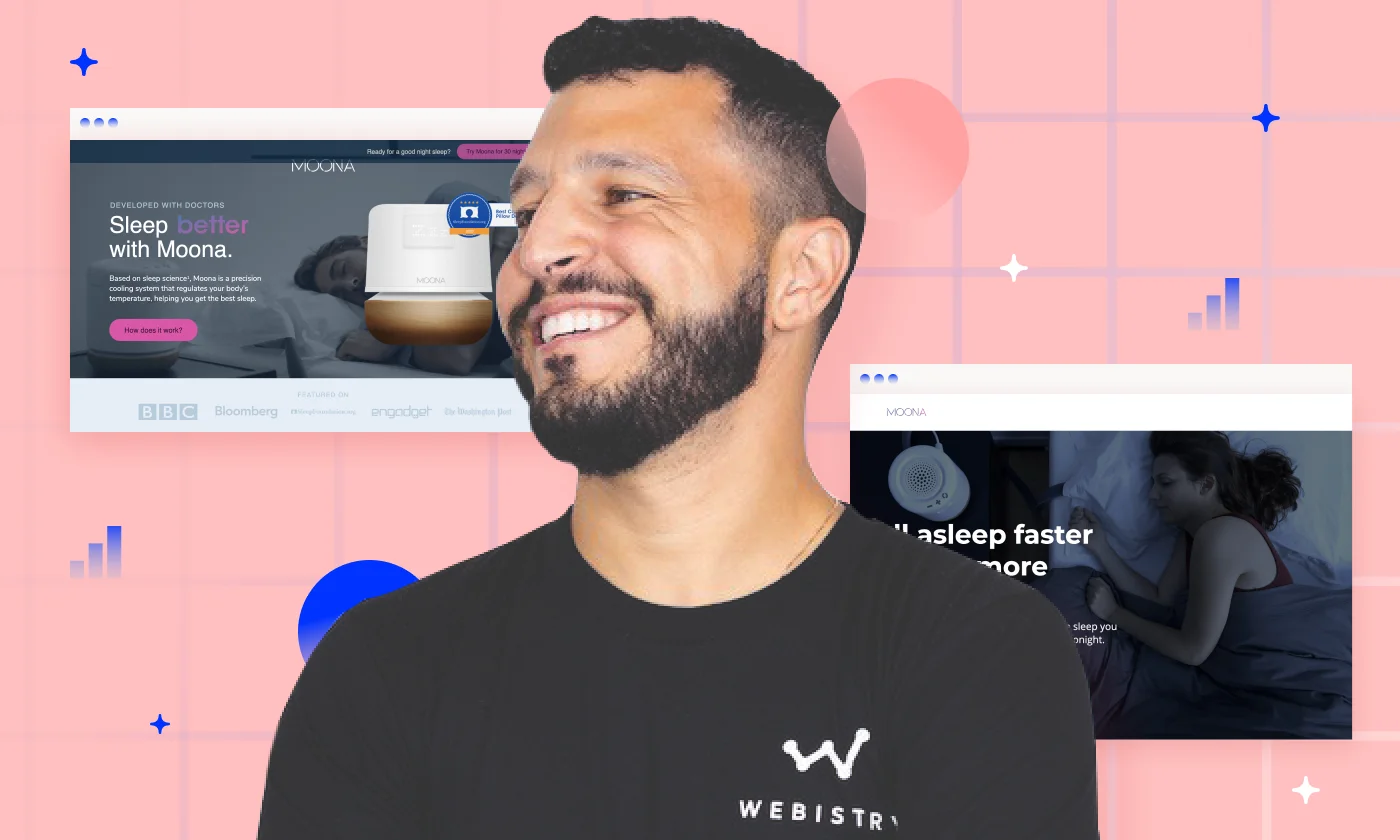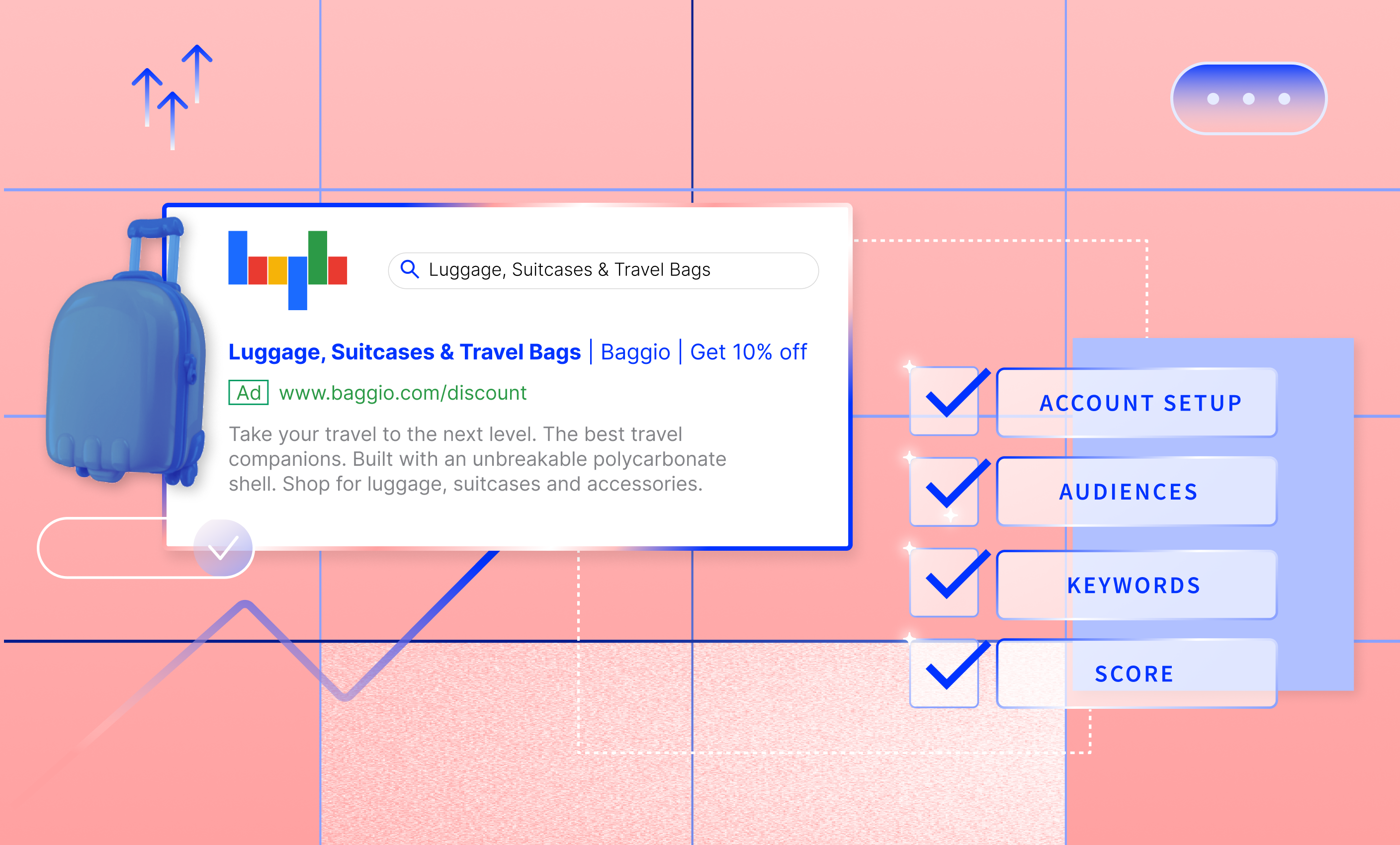Banafshe Salehi
Banafshe is a writer and creator who loves long walks on the beach (kidding?). When she’s not selling you on her puns or her pop-culture analogies, she can be found at the busiest intersection in her city with her headphones. Which are totally not falling apart.
» More blog posts by Banafshe Salehi
If you’re braving the PPC jungle, you’re probably itching to know how to optimize your campaigns for the best possible results.
Lucky for you, we’re here to help you with tips and best practices for making your PPC rates the best they can be. After reading this post, you’ll be a PPC alchemist, ready to turn those clicks into gold.
Ready?
What is a PPC conversion rate?
A PPC conversion rate is a metric that measures the percentage of clicks on your PPC ads that result in a desired action—think purchase, signup, or download. It’s a pretty important signifier of the effectiveness of your PPC campaigns.
Basically, your PPC conversion rate tells you how many of the people who clicked on your ad actually followed through with the action you wanted them to take.
A high PPC conversion rate means that your ad and landing page are performing well together, while a low PPC conversion rate indicates that there’s… room for improvement.
How do you calculate your conversion rate for PPC campaigns?
Before we get to how you can improve your PPC conversion rate, you’ve gotta figure out how to calculate it in the first place. It’s time for some marketing math.
Calculating the conversion rate for your PPC campaigns is pretty straightforward. Here’s the formula:
(Number of conversions ÷ Number of clicks) X 100 = Conversion rate
Put simply, your PPC conversion rate is the percentage of clicks that turn into customers.
To calculate it, you have to divide the number of conversions (when someone makes a purchase or completes an action) by the total number of clicks on your ad, and then multiply by 100. And voila, you have your PPC conversion rate.
For example, if your ad received 500 clicks and resulted in 25 conversions, your conversion rate would be:
This percentage tells you that 5% of the people who clicked on your ad completed the desired action.
Now that you have the formula, it’s time to do the brave thing. That means calculating your own PPC conversion rate *gasp*.
What if it’s not good? Well, before we consider that reality, let’s learn what makes for a good PPC conversion rate.
What is a good PPC conversion rate?
A “good” PPC conversion rate can vary widely depending on your industry, product, or service.
We know, we know, trick question. However… if Unbounce’s Industry Benchmark report has anything to say about it, a conversion rate between 2% to 5% is typical.
Exceptionally awesome campaigns may achieve rates above 10% and be truly considered good, but this still is a generalization and fully dependent on your industry and audience.
A truly “good” PPC conversion rate is also often the result of highly optimized strategies and targeted efforts. (Which you’re fully capable of.)
Pssst. Don’t think we’ve forgotten about optimizing your landing pages for PPC. You shouldn’t either.
Average PPC conversion rate benchmarks by industry
Different industries see varying conversion rates due to differences in customer behavior, product types, and purchase cycles. It’s all relative.
That being said, there’s still a ballpark to play within. Here’s a snapshot of average conversion rates across some major industries:
Ecommerce: 3.5%
According to the Unbounce conversion rate by industry benchmark report, the median paid search conversion rate for ecommerce is about 3.5%.
Some pointers to increase PPC conversion rates in ecommerce? Use positive language (and avoid negative emotions in your copy) and make your copy shorter and simpler.
SaaS: 2%
The average PPC conversion rate for the SaaS industry sits at about 2%. Paid search is the primary traffic source for all types of SaaS landing pages.
A couple of tips to get your SaaS PPC conversion rates up:
Having copy with high readability
SaaS PPC ads perform best when they’re short and easy to understand. This especially applies to anyone marketing mobile apps.
Across the industry, our analysis shows that short, easy-to-read copy tends to correlate with higher conversion rates.
Consider your audience—who’s reading your copy and what do they need to know to convert? If you’re promoting something affordable and straightforward, like an app, keep the language simple and clear. However, if you’re marketing complex software, a more detailed explanation might be necessary to convey its value and functionality. Tailor your approach to match the product and your audience’s needs.
Forget the scare tactics. Try pumping up your visitors with lively, value-focused language that emphasizes the awesome results of your product.
Agencies: 2.4%
Digital marketing agencies are often so busy crafting killer PPC ads for their clients that they forget about their own needs. But hey, you need to drum up leads too! It’s time to put on your professional hat and show the world what you can do.
Here are some tips on how to improve your PPC conversion rates as an agency:
Make the best pitch you can (without worrying about readability)
In most industries, as your PPC copy becomes shorter and more understandable, the conversion rate goes up. Makes sense, right?
Things are a bit different with agency PPC ads. While easy-to-read copy makes your visitors somewhat more likely to convert, you only really see the benefit at the very far end of the spectrum.
For agencies, it’s more key to make the best pitch you can, regardless of simplicity or reading level.
Business Services: 3.5%
Good news: If you’re converting over 3.5%, you’re doing better than most business services.
And if you’re not, well, here are some pointers to get you across that line:
Try social ads instead of search to double your reach.
If you’re trying to increase your PPC conversion rate, consider moving some of your paid search budget over to social ads.
For business services, paid search reigns supreme, driving half of the click-through traffic (50.0%) and about two-thirds of the form-fill traffic (68.8%). Next in line are referrals, followed by social traffic, which brings in just under 10% of visitors (8.6% for form pages and 9.3% for click-through pages).
Visitors from platforms like Facebook or LinkedIn have conversion rates twice as high as those from Google or Bing. If you’re running a lead gen campaign, prioritizing social traffic over search could lead to better results.
Average conversion rate for different PPC platforms
Now that we’ve got some key industries covered, let’s break down average conversion rates across popular PPC platforms.
Every PPC platform is like its own little universe, with a unique crowd and quirky ad dynamics that can totally shake up your conversion rates.
Search platforms
Google Ads
Google Ads is one of the most widely used PPC platforms. It offers robust targeting options and a vast network, making it a go-to for many advertisers.
Having said that, Google Ads can also be a bit of a rollercoaster, depending on your industry.
For most businesses, the average PPC conversion rate for Google Ads is 2.85%.
These benchmarks can shift based on keyword bids, target audience, location, match types, and even how well you’ve set up your negative keywords on Google Ads.
Bing Ads
Bing Ads often outshine Google Ads when it comes to PPC conversion rates, but the difference can vary wildly depending on the industry. On average, Bing (Microsoft search engine) boasts a conversion rate of 2.94% across all sectors.
Bing’s audience isn’t just a carbon copy of Google’s—they’re a whole different crowd with unique search habits. While Google is dominated by mobile searches, Bing is still rockin’ a hefty share of desktop searches.
This means Bing can capture a different slice of the market, potentially leading to better conversion rates for certain types of campaigns. So, if you’re looking to shake things up and tap into a fresh audience, Bing Ads might just be your new best friend.
Amazon Ads
Amazon Ads are a goldmine for ecommerce, boasting an average conversion rate of 9.89%. This platform is particularly effective, but like all others, its average is influenced by competition, campaign timeframe, and other factors.
Social platforms
Facebook Ads
Facebook Ads are the social butterflies of PPC, boasting conversion rates ranging from 9% to 10%, higher than most Google Ads averages. However, yet again, these rates can vary across industries.
For example, fitness products and services enjoy the highest conversion rates at 14.29%, while the technology industry sees a more modest 2.31%. Even apparel lags behind the network average with a CVR of 4.11%.
LinkedIn Ads
LinkedIn Ads might seem a bit expensive, but they’re like a secret weapon for awesome conversion rates if you play your cards right.
Imagine this: LinkedIn Ads can score conversion rates between 5% and 15%! The range is so wide because “conversions” can mean different things for different businesses on LinkedIn, whether it’s a PDF download, a product signup, or a demo request.
Instagram, Pinterest, and X (Twitter)
Instagram, Pinterest, and X (formerly Twitter) are also valuable PPC platforms. Instagram pulls in an average of 1.08%, Pinterest is at 0.54%, and X is at 0.77%.
Why do you need to optimize your PPC conversion rate?
Before you start striving for that good PPC conversion rate, do you even need to? Optimizing your PPC conversion rate is crucial for several reasons:
It helps you maximize your ROI
Every dollar spent on PPC advertising should bring you closer to your business goals. Higher conversion rates mean you’re getting more value from your ad spend, leading to better return on investment (ROI).
It helps you increase profitability
Higher conversion rates translate to more customers and sales without increasing your advertising budget. This boost in efficiency directly impacts your bottom line, making your campaigns more profitable.
It helps you spend more efficiently
When you optimize your conversion rate, you’re making the most out of every click. By improving how well your ads convert, you ensure that your budget is spent on strategies and tactics that yield the best results. This means fewer wasted clicks and more budget available for scaling successful campaigns.
It gives you a competitive advantage
In a crowded market, small improvements in conversion rates can set you apart from competitors. Optimized campaigns can outperform others, capturing more market share and establishing your brand as a leader in your industry.
It gives you valuable insights
The process of optimizing conversion rates involves analyzing user behavior and testing different strategies. This data-driven approach yields valuable insights into what works best for your audience, informing not only your PPC efforts but also your overall marketing strategy.
How can you increase your PPC conversion rate?
Improving your PPC conversion rate involves a combination of strategic ad placement, compelling ad copy, and optimized landing pages. Here are some actionable tips to boost your conversion rates.
1. Create better landing pages
Your landing page is where the magic happens. It’s where your potential customer decides whether to complete the desired action. Here’s how to make your landing pages more effective:
- Design for speed: A slow-loading page can turn visitors away. Ensure your landing page loads quickly.
- Clear CTAs: Your call to action should be prominent and persuasive. Use compelling language and make it easy for visitors to take the next step.
- Mobile optimization: Ensure your landing page is mobile-friendly. A significant portion of traffic comes from mobile devices, and a poor mobile experience can hurt conversions.
And what better way to create your high-converting PPC landing pages than a trustee landing page builder?
With Unbounce’s landing page builder, you get pixel-perfect design control, dynamic text replacement to match visitors’ search intent, and the flexibility to create custom elements with JavaScript and CSS for a tailored, high-converting experience.
2. Write conversion-centered copy
Conversion copywriting is a persuasive writing technique that entails carefully framing and structuring information so more readers take the desired action.
By bringing conversion-centered copywriting to the forefront of your PPC ads and landing pages, you’ll be going the extra mile to make sure you’re not missing any conversions.
We’ve got just the AI copy generator tool for you to get all the help you need with writing copy that converts.
3. Align your ad copy with your landing page copy
Consistency is key. Your ad copy sets expectations, and your landing page should deliver on those promises. If your ad promotes a discount, make sure the landing page prominently displays that discount. Mismatched messaging can confuse and frustrate visitors, leading to lower conversion rates.
4. A/B test your PPC ads
Testing is vital and can help you uncover your best-performing variant.
A/B testing involves creating two versions of a landing page with slight variations to see which performs better. Test different headlines, images, CTAs, and layout elements to determine what resonates best with your audience. Continuous testing and optimization can lead you to significant improvements in conversion rates.
Looking for the right tool to get started? Unbounce’s A/B testing tool empowers you to optimize your marketing efforts with precision and ease.
By allowing you to build, launch, and analyze landing page experiments all in one platform, it ensures data-driven decisions lead to peak performance without the guesswork.
So whether you’re validating new products, experimenting with offers, enhancing user experience, or pushing creative boundaries, Unbounce’s A/B testing tool is your secret weapon for growth at any stage.
5. Use high-quality images and videos
Visual content can significantly impact your conversion rates. High-quality images and videos can make your landing page more engaging and persuasive. Use relevant visuals to your product or service and complement your overall message.
6. Leverage social proof
Testimonials, reviews, and case studies can build trust and credibility. Showcase positive feedback from satisfied customers to reassure potential buyers that your product or service delivers on its promises.
7. Simplify forms
If your conversion action involves filling out a form, make it as simple as possible. Ask only for essential information to reduce friction and increase the likelihood of completion.
1. Unbounce
Unbounce is a powerhouse for landing page creation, copywriting, and A/B testing (and we’re not just saying that because it’s us). Our platform allows you to build high-converting landing pages without needing a developer.
With Unbounce, you can quickly test different versions of your landing pages to see what works best, ensuring your campaigns are always optimized.
Here are only a few of the features that can help you improve your PPC conversion rates.
- You can build relevant, high-converting landing pages for Google Ads
- You can A/B test your pages to optimize for maximum conversions using the built-in A/B testing tool
- You can get more conversions over time using AI with our Smart Traffic feature.
- You can connect your pages to almost any marketing automation or CRM tool by choosing from a wide selection of integrations
- You can build tailored landing pages to match every ad group
- You can quickly clone your work for other campaigns. When you find an ad-to-landing-page combo that delivers, it’s like hitting the PPC jackpot.
2. Google Analytics
Google Analytics is essential for tracking and analyzing your PPC campaign performance. It provides insights into user behavior, helping you understand how visitors interact with your landing pages and where improvements can be made.
3. SEMrush
SEMrush is a comprehensive tool for keyword research, competitor analysis, and PPC campaign management. It helps you identify high-performing keywords, monitor your competitors’ strategies, and optimize your ad copy for better performance.



![[Build – MOFU] PPC Use Case Page – V2 Landing pages with PPC](https://unbounce.com/photos/blog-visual-cta-generic-ppc-yellow.jpg)







